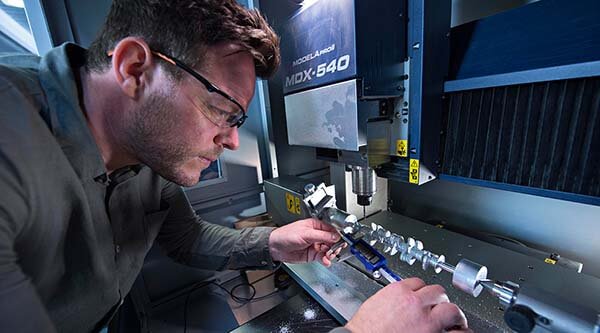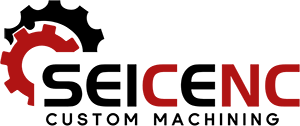
1. Optimize material choices
The materials you use influence the cost of CNC machined parts. Factors affecting the material cost will include the machinability of the material and the initial cost of the bulk material in its raw form. This is because a significant factor affecting the price of CNC machining is material run time and labour costs. The reduced machine running time due to more machinable materials results in fewer costs overall. Softer materials are easier to cut and take less time to machine. They can also be cut using less expensive tools. The main cost of using a particular material is the bulk material price.
It is advised to select the lowest cost material with the properties that meet your design requirements. If you are unsure about what material to choose, submit a quote with us for a range of different materials to give you an idea of the price range.
2. Quantity
Without any design changes, the cost of your part can be reduced significantly by just increasing the order size. Our engineers have to perform the part set-up, programming and tool choice, which is a fixed cost. The fixed price can be shared by manufacturing multiple parts simultaneously, making each part more economical.
3. Finishes
The finishes you use and have will also impact CNC machine costs. Usually, when a part is machined, traces or scratches can sometimes be left on the part’s surface. Specialized finishes such as heat treatments, specialized treatments, and surface types are all part of the processing steps. Multiple surface finishes can add extra costs, so only add these if they are essential. Bead blasting, anodising and powder coating can increase costs, so this is an easy way to reduce prices if they can be avoided.
4. Avoid complex part geometry
Part dimensions, size and complexity, will all have a considerable impact on cost – larger parts consume more material usually, as these highly detailed parts need multiple processes to complete and may also require multiple machines. You can make complex CNC machined parts less expensive by designing them so that fewer tools and fewer machines are needed for the job. For example, specific measurements and features could be adjusted to meet the requirements of a cheaper component, or altered so that fewer machines are needed to finish the job.
5. Reduce designs with thin walls
Thinner walls are, surprisingly, more cost inducing than thicker walls in CNC Machining. This is because thin walls can distort because the thinner material will naturally be weaker and prone to vibrations. This can cause chatter, which slows down the machine speeds, resulting in additional costs and machine operator time. Multiple passes at low cutting depths for thin walls, machining these more accurately can always be a problem.
By expanding thin walls, to a more manageable minimum width, walls will be sturdier and tolerate faster machine processes.
Top tip: If you need thin walls, consider alternative machining methods, such as sheet metal fabrication.
6. Minimize tight tolerances
Tighter tolerances naturally give less leeway when it comes to producing a part, meaning that there can often be more excess material wastage and slower machine times to meet the accuracy requirements of the component. Where possible, increase tolerances as this can speed up machining time and result in less material wastage, too. Of course, this won’t be possible in some instances, but if, for example, a part can work with a tolerance of +/- 1mm as opposed to +/- 0.1 mm, you will be saving yourself more cost impacts overall.
7. Use standard hole sizes
By using standardized hole sizes throughout the design, you can significantly reduce costs as you won’t require a specialist tool to cut the part in question. Standard drill hole sizes mean less intervention is needed in the machining process. Non-standard hole sizes to use end mill tools, which can incur higher costs and slow down the process. Standard hole sizes will mean standard drill bits can complete the job, generally speeding things up.
8. Avoid adding text or logos
Adding additional features such as text or logos can also incur more significant costs. A ball end mill is used to trace numbers, letters and symbols for the CAD model, and the use of an additional tool, plus set up time to machine this piece, will mean increased running time overall.
9. Keep the number of machine set-ups to a minimum
If possible, mass-produce parts to drive down costs, as smaller quantities mean a large percentage of start-up costs is taken up. Larger quantities will affect the unit price, meaning these overhead costs can be almost eliminated because the cost is spread over many parts.
Let Seicenc boost your business today!
Seicenc has been in CNC machining industry for 12 years, let us provide you with high quality custom precision machined parts.
By the end of 2022, we have worked with more than 1,000 clients in more than 30 countries, and supplied them over 1 million unique parts.
Do not hesitate. Just contact us right now! We will give you an instant quotaion within one days!
